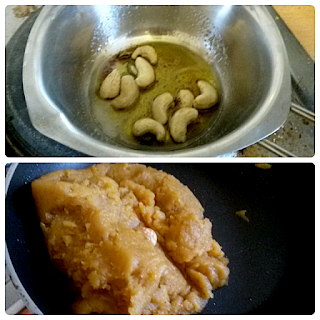This delicious dessert of grains, pulses and dried fruit, referred as Asure – Noah’s Dessert, is most probably one of Turkey’s most famous dessert. According to the legend, Noah made it on the Ark by combining whatever ingredients were left on the ark. It is also the traditional dessert to serve on the 10th day of the Muslim month Muharrem, the first month of the Islamic calendar. Asure is always made in large quantities and shared with friends and neighbors.Though the ingredients list is pretty rich, I believe whatever grains, pulses and dried fruit you have in your pantry will do.
My Turkish neighbour gave me this dessert today and tasted really really yummy...!! I would call it as a Dessert of the six Tastes. As it gives all the 6 tastes of the tongue when u eat it. I am sharing with u the receipe which I have requested from her, will post the step wise pictures sooner.
Recipe Cuisine: Turkish | Recipe Category: Sweet
Prep Time:30 mins | Cook time: 30 mins | Serves:8
Prep Time:30 mins | Cook time: 30 mins | Serves:8
Ingredients
Haricot beans (soaked overnight at least for 6 hours and drained) - 50 gms (Kaaramani or Mochai)
Skinned broad beans ( soaked overnight at least for 6 hours and drained - 50 gms (Pachai Pattani)
Chickpeas - (soaked overnight at least for 6 hours) and drained - 50 gms (Kondai Kadalai)
Barley (with husks removed) - and soaked overnight in plenty of water - 125 gms
Corn seeds - 1 tbsp
Rice -(washed and drained) - 50 gms
Dried apricots - 125 gms
Raisins - 50 gms
Currants (Black or blue or red ) - 50 gms
Orange skin( finely chopped) - 1/2 tbsp
Orange fruit flesh - 1tbsp
Sugar - 225 gms
Corn flour (cornstarch) or rice flour - 2tbsp
Rose water - 150 ml
_______________________________________________________________________________
Skinned broad beans ( soaked overnight at least for 6 hours and drained - 50 gms (Pachai Pattani)
Chickpeas - (soaked overnight at least for 6 hours) and drained - 50 gms (Kondai Kadalai)
Barley (with husks removed) - and soaked overnight in plenty of water - 125 gms
Corn seeds - 1 tbsp
Rice -(washed and drained) - 50 gms
Dried apricots - 125 gms
Raisins - 50 gms
Currants (Black or blue or red ) - 50 gms
Orange skin( finely chopped) - 1/2 tbsp
Orange fruit flesh - 1tbsp
Sugar - 225 gms
Corn flour (cornstarch) or rice flour - 2tbsp
Rose water - 150 ml
_______________________________________________________________________________
To Garnish :
Cinnamon Powder - 2tsp (add if u like the flavour)
Dried figs, sliced - 4 to 5 nos
Dried apricots, sliced - 4 to 5 nos
Sultanas - 1tbsp
Crushed walnuts - 2tbsp
Pomegranate Seeds - 1/2 cup
--------------------------------------------------------------------------------------------------------------------
Method:
- First Cook the beans in separate pans of fresh water until just tender. The haricot beans will require about 50 minutes; the broad beans and chickpeas about 1 hour. O r u can pressure cook it separately for 5 whistles each. Cook the corn and keep aside.
- Transfer the barley and its soaking water to a large, deep pan and bring to boil. Reduce the heat and simmer for about 45 minutes, or until the barley is tender, topping up with the water during the cooking time if necessary.
- Add the cooked beans, chickpeas and the rice, and bring the liquid to boil again. Reduce the heat and simmer for about 15 minutes.
- Meanwhile, place all the dried fruit, orange skin and flesh in a bowl and cover with boiling water. Leave to soak for 10 minutes, then drain. Add the fruit to the pan with the beans and stir in the sugar. Continue to simmer, stirring from time to time, until the mixture thickens.
- Mix the corn flour or rice flour with a little water to form a creamy paste. Add 2tbsp of the hot liquid from the pan to the paste and add it to the pan, stirring constantly. Add the rose water and continue to simmer the mixture for another 15 minutes, stirring from to time, until the mixture is very thick.
- Transfer the mixture to a large mixing bowl. Shake the bowl to make sure the surface is flat and leave the pudding to cool. Sprinkle the cinnamon powder over the pudding and arrange the sliced dried figs, apricots, sultanas and walnuts over the top. Sprinkle pomegranate seeds over generously. Serve chilled or at room temperature.
























































